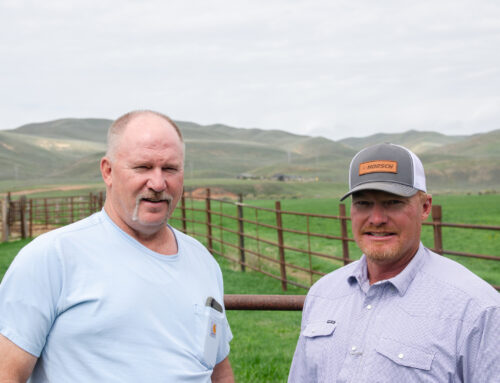“As Long as Three Airbus A320s”: The WindRunner Megaplane Is About to Reshape Wind Power a
June 15, 2025
| IN A NUTSHELL |
|
The aviation industry is abuzz with excitement as the WindRunner, an ambitious project by Radia, takes flight. This colossal cargo plane is engineered to revolutionize the transportation of large-scale land wind turbines. By overcoming current logistical barriers, the WindRunner promises to transform how we harness wind energy, enabling access to previously unreachable sites. With its impressive dimensions and unmatched carrying capacity, this aircraft is more than just a logistical tool; it marks a significant turning point in the global energy transition, offering new opportunities to accelerate the production of renewable energy.
A Solution to Wind Energy’s Logistical Challenges
Land-based wind energy is a crucial component of the energy transition, yet it faces a significant challenge: transporting its enormous components. Modern wind turbine blades can reach lengths of 230 feet, making their transportation by road or rail complex and costly. This is where the WindRunner comes into play. Designed to transport massive structures directly to production sites, even in the most remote areas, this aircraft allows for a more flexible and rapid installation of wind farms.
With its colossal dimensions, the WindRunner redefines air transport capabilities. By expanding the possibilities for wind turbine location, it actively contributes to enhancing their energy efficiency and reducing carbon emissions. This logistical innovation could very well transform the future of renewable energy, making previously untapped sites accessible.
Radia: A Leader in Aeronautical Innovation
Since its establishment in 2016 by Mark Lundstrom, Radia has become a key player in aeronautical innovation. By developing the WindRunner, the company demonstrates a profound understanding of the challenges of the energy transition. By tackling logistical barriers, Radia offers a viable and innovative solution to accelerate the adoption of renewable energies.
Beyond technical ingenuity, Radia’s success is built on strategic partnerships and solid financial backing. With nearly $110 million raised, the company has attracted renowned investors and partners, such as LS Power and ConocoPhillips. These collaborations ensure the project’s feasibility and strengthen Radia’s position as a leader in the green aviation sector.
The Technical Specifics of the WindRunner
The WindRunner stands out due to its exceptional technical characteristics, designed to meet the specific needs of land wind turbine transportation. With a fuselage length of 354 feet and a volumetric load capacity of approximately 290,000 cubic feet, it surpasses traditional cargo planes. Capable of operating on runways as short as 5,900 feet, it can access remote areas that are otherwise unreachable by other freight aircraft.
This technical innovation is the result of meticulous design that combines robustness with flexibility. By facilitating the transport of large-scale wind turbines, the WindRunner helps optimize their energy efficiency, a major asset in the fight against climate change. It also opens new avenues for the expansion of land wind infrastructure.
A Major Impact on the Global Energy Transition
The WindRunner emerges at a crucial moment for the global energy transition. By facilitating the installation of wind turbines in remote areas, it plays a key role in optimizing wind resources and reducing carbon emissions. According to the International Energy Agency, land wind energy could account for up to 40% of global energy production by 2050. The WindRunner could be an essential catalyst in achieving this goal.
By making wind energy more accessible and efficient, the WindRunner significantly contributes to the decarbonization of the energy sector. It represents a major advancement in the fight against climate change, offering a pragmatic and innovative solution to current energy challenges.
The WindRunner, with its colossal dimensions and impressive capabilities, not only redefines air transport standards but also opens new prospects for the future of land wind energy. By facilitating the transport and installation of large-scale wind turbines, this aircraft helps make wind energy more accessible and efficient, playing a crucial role in the global energy transition. As the world shifts towards a more sustainable economy, what other groundbreaking innovations might emerge to support this movement?
Our author used artificial intelligence to enhance this article.
Did you like it? 4.4/5 (29)
Search
RECENT PRESS RELEASES
Related Post



